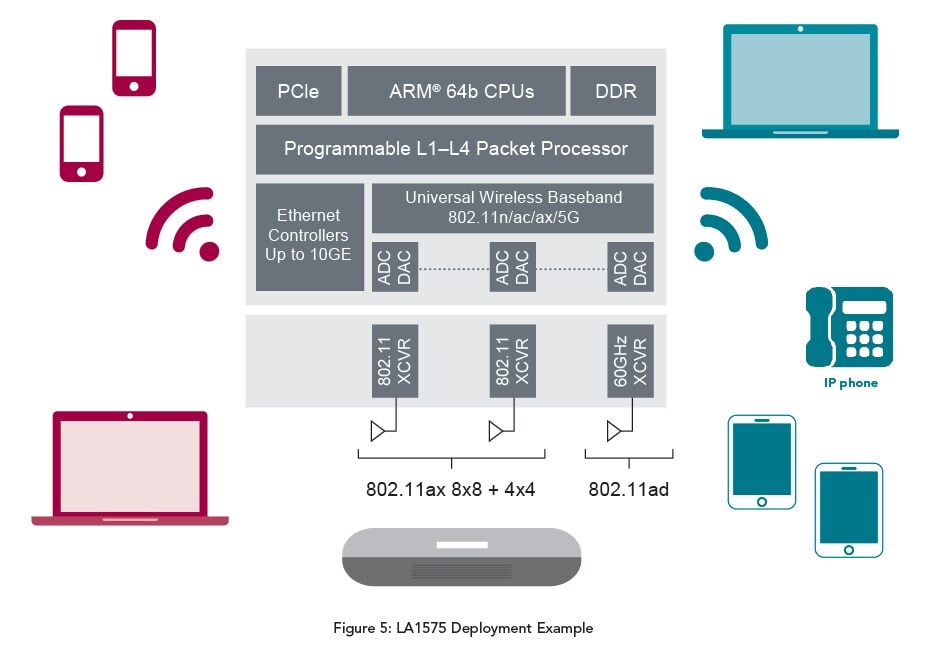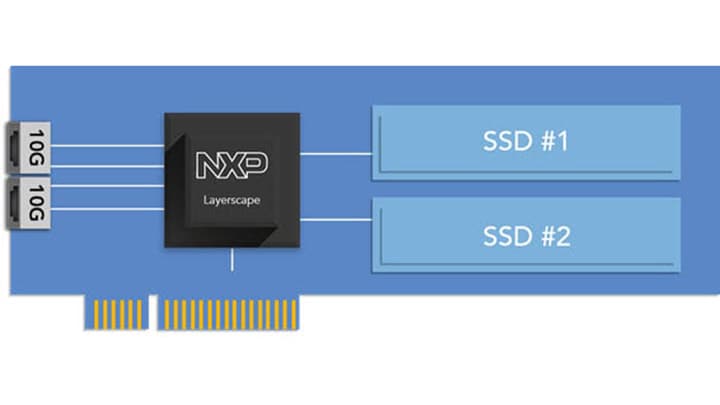While enterprise and service-provider communications have been stuck in the
rip-and-replace model of periodic network upgrades, a funny thing has happened
in the quest for ever faster speeds. These networks’ physical layers
have converged on OFDM and wide channel bands, regardless of media (wired or
wireless), band (baseband, sub-6GHz, or millimeter wave), and standards body
(ITU or IEEE). In many cases, these various network technologies will
simultaneously offer the same user network access. For example, the user may
be served by G.Fast broadband via Wi-Fi, sub-6GHz LTE and mmWave-based 5G
cellular.
But not every aspect of networks has converged and none will be forever
static. OFDM parameters, such as subcarrier spacing, vary as much as a result
of the different paths committees take toward standardization as for technical
reasons. Massive MIMO makes sense for 28GHz and higher carrier frequencies
owing to their small antennas and poor signal propagation. At Layer 2,
networks differ significantly because of differing topologies and usage
models. Meanwhile, vendors continually upgrade their designs and the industry
periodically updates its standards. Network systems must either rely on unique
hardware for each standard as they have in the past or hardware with
revolutionary flexibility.

Observing the trend toward technology convergence and the benefits flexibility
(if it can be provided without compromise to performance or efficiency), NXP
recognized the opportunity to develop a unifying programmable architecture.
The company’s new access technology breaks through the limits imposed
by hardwired solutions, freeing enterprises and service providers to reap the
benefits of software-defined access. The technology stands to transform the
business model of communication services, be they deployed by enterprises for
internal customers or by telcos for external customers. Key components of the
architecture are:
-
PHY: An efficient physical layer implemented in software,
allowing customer differentiation
-
MAC: A programmable multigigabit block tightly coupled with
a packet-processing engine
-
Packet processing engine: A networking and control block
supporting complex packet routing, network services and remote provisioning
and virtualized networks
-
SoC: A chip integrating the above components plus Arm CPUs,
memory, interconnect and I/O
-
Development: An ever-growing software development ecosystem
that OEMs and operators can use to speed their time to market with
differentiated solutions
To illustrate the benefits of the new Layerscape LA1575, the first Layerscape
processor integrating NXP’s new access technology, let’s review
a use case with an enterprise access point deployment. In this scenario,
assume that a company is adding a 60GHz radio module to an existing Wi-Fi access
point to meet bandwidth demand for new wireless use cases. Assume an 802.11ad
module costs $150 and installation costs another $50. The addition on its own
is not a huge expense, but a new 60GHz Wi-Fi standard, 802.11ay, is on the
cusp of being standardized. With a radio based on Layerscape solutions, the
company can address its use cases now and upgrade to 802.11ay at little cost
via software in the future.
A bigger benefit to a software-defined radio in the 60GHz band is that
real-world performance is likely to arise as a problem. The enterprise could
spend hours of troubleshooting (assume 5 hours at $200 per hour for a
consultant) and perhaps scrap the 60GHz Wi-Fi deployment owing to poor network
performance. However, as 60GHz Wi-Fi vendors gain field experience with the
phased antenna arrays and associated signal processing, they will upgrade
their algorithms.
A fully programmable physical layer, including antenna processing, will help
enable vendors to implement these upgrades on existing customer hardware.
Thus, the enterprise’s initial expense of $200 per node is its final
expense and not a precursor to expenses several times greater for upgrades and
debugging.
Fully programmable physical-layer hardware could completely transform the
industry. Communications gear has historically been deployed in a
rip-and-replace cycle. To deploy new services or technologies, businesses and
service providers replaced old equipment with new equipment. From a technology
perspective, this yielded a stair-step experience: a step up in CapEx for
installing new gear followed by a plateau of no CapEx during which users
experienced the upgraded network.
Equipment based on the access technology in NXP’s new LA1575 can help
smooth this experience: users get new network services or better performance
more often, equipment hardware lifecycles are longer and network upgrades are
more frequent and less expensive because they are based on software. Mirroring
this shift from hardware to software is a shift in cash flow from large
capital investment lumps depreciated over several years to smaller annual
operational expenses for new software, acquired as needed to increment the
network’s capabilities. In summary, the network has become more
consumable.
To read more about the technologies NXP’s converged architecture
approach to wireless access, please visit
LA1575
or download the new
White Paper.





